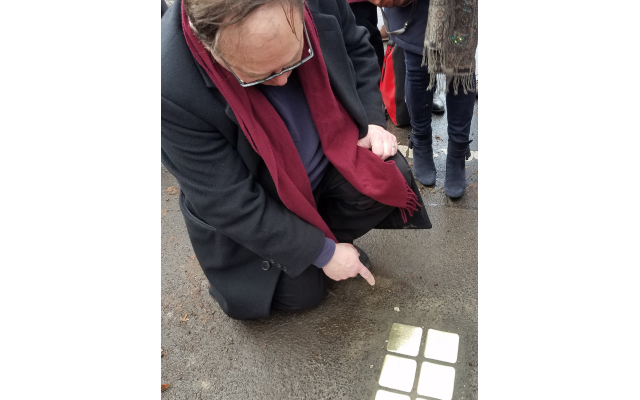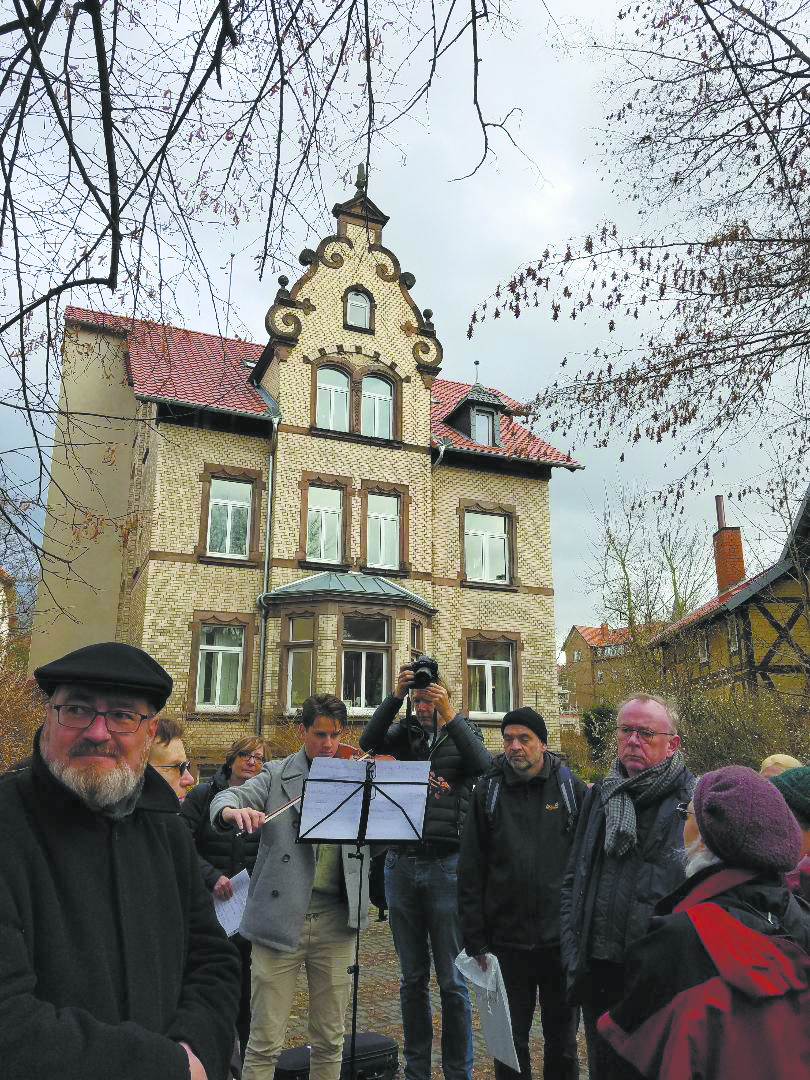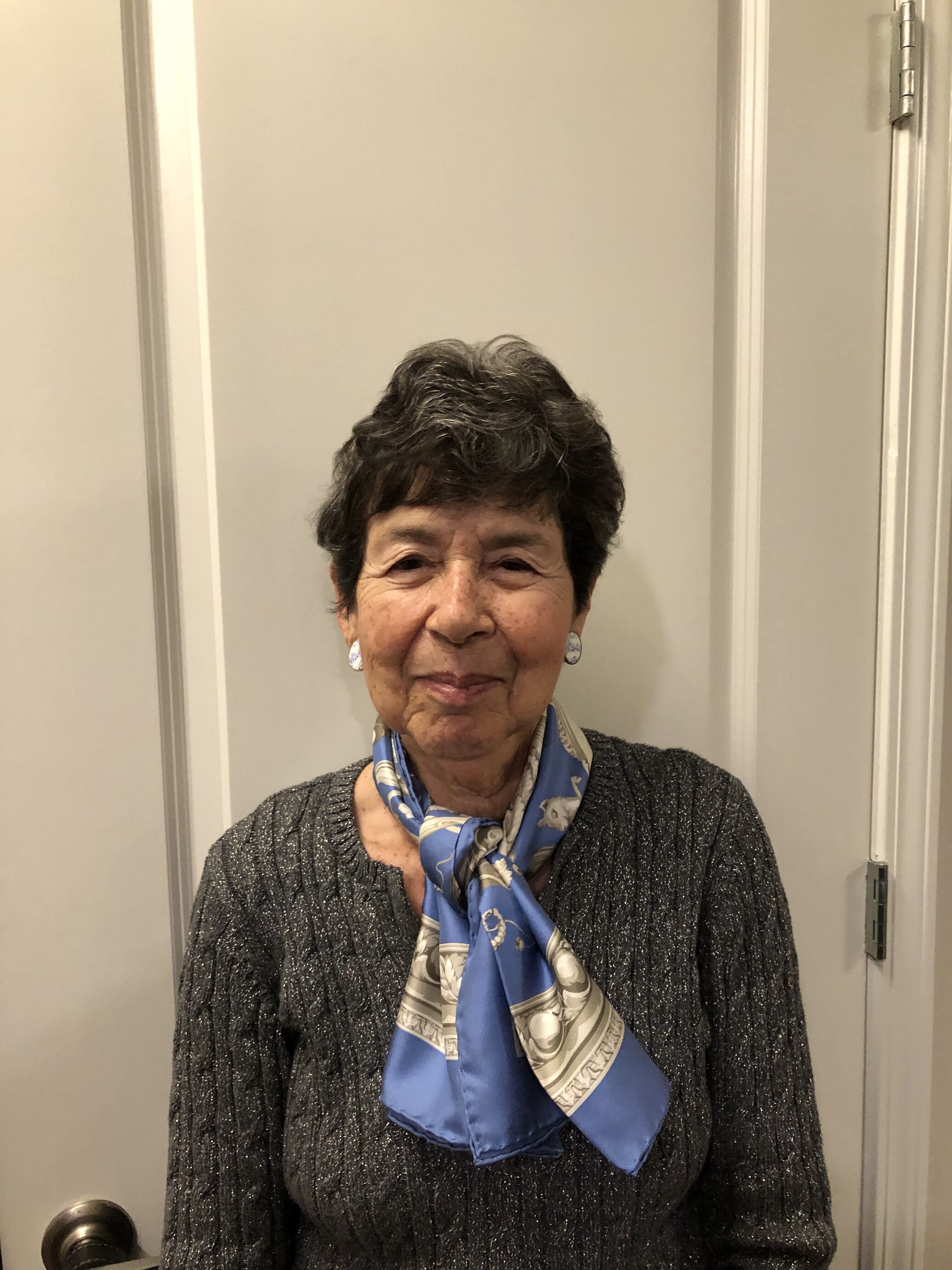Stumbling Stones for Holocaust Victims Draw Controversy
Joab Eichenberg-Eilon and Ronald Brown, traveled to Gottingen, Germany, for the laying of brass plates, known as Stolpersteine (stumbling stones), in memory of lost family.

Under rain-laden cool skies, dozens of coat-clad local high school students, city officials, members of the Christian-Jewish Association of Gottingen, Germany, and relatives from the United States solemnly paid tribute Dec. 9 to Jewish family members. Those relatives had lived in the house overlooking the site before they had to flee from the Nazis.
Among those who traveled for the occasion was Atlantan Joab Eichenberg-Eilon (full disclosure: the author’s husband), whose great-grandmother Meta Graefenberg Mueller, grandmother Grete and two sisters lived in the house in the late 19th century and first third of the 20th century.
Eichenberg-Eilon’s grandmother moved to Palestine in 1933 with her husband Rudolf Eichenberg and her two young children – all of whom survived the war. Grete’s sisters Rosel and Ilse did not. Rosel’s four children managed to escape to the United States in the late 1930s, while Ilse’s young girls died along with their mother.

Eichenberg-Eilon and a cousin, Ronald Brown from Seattle, traveled to Gottingen for the laying of the 4-by-4-inch brass plates, known as Stolpersteine (stumbling stones). The stones were for eight family members of theirs who had once lived in the house behind where the stones were laid.
The Stolpersteine Memorial Project was launched more than 20 years ago by artist Gunter Demnig as a memorial to victims of Nazi Germany. Although it’s known mostly for commemorating Jewish victims, Demnig told the AJT that the project actually began in memory of gypsies killed by the Nazis, and today also includes disabled victims.
“Last year I spent 270 days abroad,” laying stumbling stones in more than 20 European countries, said Demnig, gesturing to his two-year-old van which he said now has more than 56,000 miles on it. Demnig, who has no Jewish connections, created the idea and still is responsible for 95 percent of the work.
The Stolpersteine Project – like everything involving Jews and Germany – is not without controversy. Atlanta Holocaust survivor Henry Birnbrey told the AJT that he has mixed emotions about the plaques cemented into sidewalks in memory of Jewish victims of the Nazis. “People walk on them,” he complained.
Another Atlanta Holocaust survivor, Manuela Mendels Bornstein, agreed. “I don’t think it’s respectful because people walk on them.” Still, she acknowledged that there is a Stolpersteine brass plate for her maternal grandmother in Hamburg, Germany, her last voluntary permanent home. Like Eichenberg-Eilon’s family, Bornstein’s grandmother and millions of other European Jews were forced to move several times by the Nazis before they were sent to concentration camps, ghettos or, in some cases, able to escape abroad.

“I don’t have a problem with Stolpersteine on the ground,” said Eichenberg-Eilon. “I think it’s a way to bring them [Holocaust victims] back to life since they weren’t allowed to continue their lives.” Referring to the fact that Stolpersteine need to be requested by family members, he added that it’s a good way for family to remember those lost. “And it’s good for non-Jewish people and the city to remember that these Jews just didn’t disappear,” he added.
They practically did. In 1933, when Hitler came to power, there were about 400 Jews in Gottingen, now a city of about 130,000. In 1945, there were just three Jews. One was a distant cousin of Eichenberg-Eilon’s, whose family also dedicated several Stolpersteine in front of a retail store in the city center once owned by the family. Three generations of the Gray family – shorted from Graefenberg – traveled from the United States to Germany for the Dec. 9 program that included a ceremony at the 800-year-old city hall in Gottingen.
Local high school students read short profiles of each person for whom a Stolpersteine was laid that they had researched, and one student played the theme song from “Schindler’s List” on a violin.
The 17 Stolpersteine laid on Dec. 9 added to the existing 37 brass plates placed earlier in the city.



comments